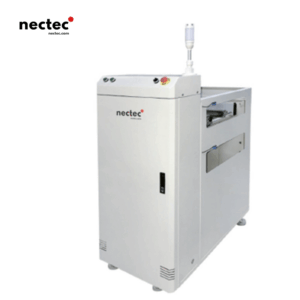In the rapidly evolving world of electronics manufacturing, maintaining efficiency and accuracy in assembly lines is paramount. Surface Mount Technology (SMT) has revolutionized PCB (Printed Circuit Board) production, and using barcode scanning conveyors within this process elevates the operation to unprecedented levels. In this article, we will delve into the importance of SMT PCB barcode scanning conveyors, their impact on production efficiency, and emerging trends in automation technology.
Understanding SMT PCB Barcode Scanning Conveyors
SMT refers to a method of mounting electronic components onto PCBs, making the production process compact and efficient. Barcode scanning conveyors are essential in this context; they automate the identification and tracking of individual PCBs as they move down the assembly line. This automation reduces errors, minimizes the need for manual handling, and streamlines the entire manufacturing process.
The Role of Barcode Scanning in SMT
Barcode scanning technology has gained immense prominence in manufacturing due to its ability to improve tracking and management efficiency. By integrating barcode scanners within SMT PCB conveyor systems, manufacturers can track components from the moment they enter the production line until final inspection and packaging. The benefits include:
- Error Reduction: Automated scanning eliminates human error, ensuring that the correct components are assembled onto the PCB.
- Real-time Monitoring: Scanners provide real-time data tracking, allowing for immediate analysis of production efficiency and component usage.
- Inventory Management: Barcode scanning facilitates better inventory control by allowing manufacturers to keep precise counts of components and track their location throughout the production line.
Enhancing Production Efficiency
Implementing SMT PCB barcode scanning conveyors positively impacts production efficiency in several ways:
1. Streamlining Operations
With barcode scanning, the entire process becomes streamlined. Operators can quickly scan PCBs and components as they move through various stages of production, from assembly to inspection. This rapid processing reduces bottlenecks and idle time, ultimately leading to faster turnaround rates.
2. Improved Quality Control
Barcode scanners can be linked with quality control systems to track defect rates and identify problematic batches. By analyzing this data, manufacturers can continuously improve processes and reduce waste, ensuring high-quality output.
3. Data-Driven Decision Making
Every scan provides valuable data that can be used for performance analysis and decision-making. By monitoring throughput, error rates, and production times, manufacturers can identify trends, forecast needs, and optimize resource allocation.
Choosing the Right SMT PCB Barcode Scanning Conveyor
When selecting an SMT PCB barcode scanning conveyor, there are several factors to consider:
1. Integration Capabilities
The conveyor system should seamlessly integrate with existing manufacturing processes and ERP systems. This integration will facilitate streamlined communication across different platforms and departments.
2. Speed and Accuracy
Evaluate the speed of the barcode scanning mechanism and its accuracy in different manufacturing conditions. High-speed scanning ensures that production lines remain efficient without compromising the accuracy of data capture.
3. Scalability
As production demands grow, the conveyor system should be expandable. Opt for systems that can be modified or scaled up without extensive overhauls that disrupt operations.
Emerging Trends and Innovations
The convergence of Industry 4.0 and manufacturing has led to several innovations in the realm of SMT PCB barcode scanning conveyors. These emerging trends reflect a shift towards greater automation and efficiency in manufacturing practices:
1. IoT Integration
IoT-enabled barcode scanners and conveyors allow manufacturers to collect and analyze vast amounts of data regarding the production line. This data can lead to predictive analytics, where potential downtime is anticipated, and maintenance can be scheduled proactively.
2. Machine Learning Algorithms
Integrating machine learning algorithms into barcode scanning systems enables continuous learning from past production cycles. These systems can optimize processes by adjusting scanning parameters and identifying inefficiencies.
3. Enhanced User Interfaces
Modern scanning systems come with user-friendly interfaces that allow operators to monitor multiple metrics at a glance. Touchscreen displays, real-time alerts, and intuitive navigation enhance ease of use and accelerate operator training.
As manufacturers continue to seek new ways to enhance efficiency and accuracy, SMT PCB barcode scanning conveyors represent a pivotal component of this transformation. They not only improve the integrity of manufacturing processes but also pave the way for future advancements in automation technology. By investing in these systems today, manufacturers will be well-positioned to embrace the smart factories of tomorrow, where operational excellence and innovation go hand-in-hand.






